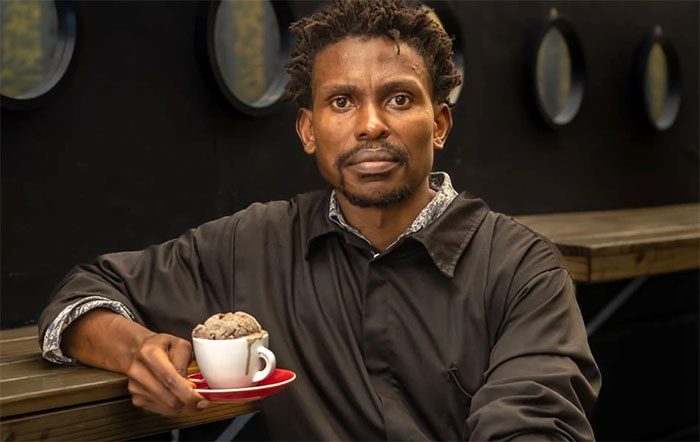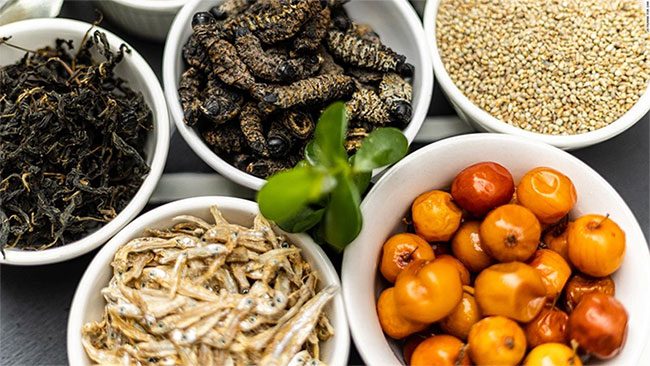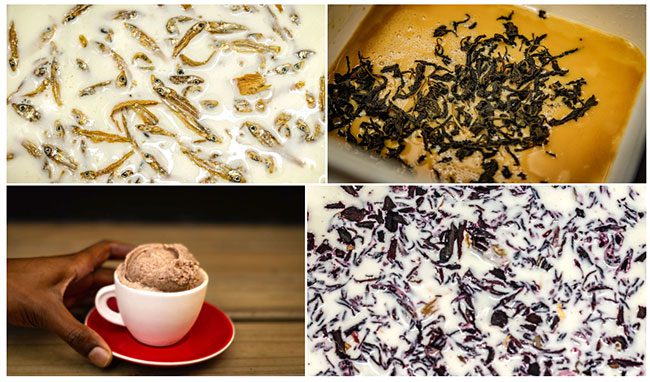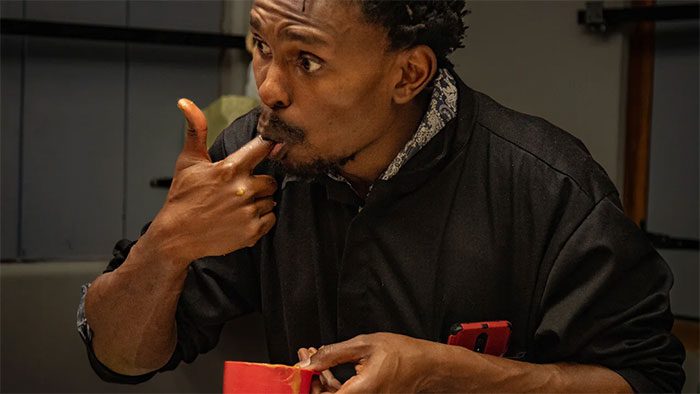A molecular biologist uses fish, insects, and various grains sourced from across Africa to create ice cream flavors that not everyone dares to try.
Located between a second-hand bookstore and a music shop in Observatory, a suburb of Cape Town, South Africa, is a shop with a blackboard sign reading “Tapi Tapi – Authentic African Ice Cream Made by Hand.”
This location has become one of the most popular food spots in Cape Town since it opened in October 2020.
The Founder of Cape Town’s Most Famous Ice Cream Shop

Tapiwa Guzha, owner of Tapi Tapi ice cream shop.
In the small kitchen of the shop, molecular biologist and PhD holder from Zimbabwe, Tapiwa Guzha, is creating unique ice cream flavors.
His ice cream shop is named Tapi Tapi, a combination of his first name and the colloquial term for “yum yum” in the Shona language. Guzha grew up in his grandmother’s home in Harare, Zimbabwe. They lived in the suburbs, with a garden full of fruits, vegetables, herbs, and chickens. He learned about farming, animal husbandry, and the healing properties of various plants.
On the shop’s kitchen counter is the ice cream menu, featuring: salted kapenta fish (blitzed); hard caramel candy with Scotch bonnet chili; dried daylily leaves and caramel; malted millet; hibiscus, cloves, and star anise.
“This (is) ice cream because of my identity and for the benefit of others,” Guzha told CNN.
“I think the global food narrative doesn’t leave much room for Africa… unless we consider the overarching idea of this continental cuisine,” Guzha shared, “I’m not trying to appeal to the world; I’m trying to help Black people enjoy their culture more regularly.”
– How did a molecular biologist become the founder of one of the most famous ice cream shops in Cape Town?
– “It was a coincidence,” Guzha said.
Everything started when Guzha watched a cooking show and saw a method for using dry ice to make ice cream. He easily accessed this ingredient and began experimenting at home.
Guzha describes himself as a “curious scientist.” He shifted to making ice cream after experimenting with dry ice.
However, the turning point came when he realized that ice cream has the power to transport people to their homeland; it can provide something magical and nostalgic – especially for the Black customer demographic.
Unique Ice Cream Ingredients
Guzha utilizes distinctive ingredients and flavors that represent various regions of Africa to create ice cream that tells the culinary and cultural stories of indigenous Africans.

Kapenta fish, Mopane worms, hard caramel candy, and Scotch Bonnet chili create one-of-a-kind ice cream flavors.
To bring these unique ice creams to life, Guzha draws inspiration from everywhere. It could be a conversation, a passing scent, an everyday meal, or a longing for the ocean. He notes that social media also plays a significant role in discovering, exploring, and innovating flavors.
Red Finger Millet, rich in nutrients, is widely grown across the continent. Black-eyed peas and tiger nuts from West Africa. The East, Central, and Southern African regions feature Kapenta fish, also known as Matemba, known for its mild salty flavor. Dried Mopane worms, chewy, crunchy, and nutritious, are popular in South Africa. All these ingredients are transformed by Guzha into surprising, delightful, and even shocking ice cream flavors.

Hibiscus, clove, and star anise ice cream or malted millet ice cream are among the unique flavors created by Guzha.
Tapiwa Guzha explains: “I don’t really create ice cream flavors based on traditional ideas. I do what I like and combine any ingredients I can find.”
Another ingredient that Guzha is particularly interested in is Mphepho, an herb used in traditional medicine in South Africa, believed to connect to the spirit world. By creating ice cream from this ingredient, he hopes to expand people’s understanding of this sacred plant.

The menu at Tapi Tapi changes daily, and no two ice creams are the same.
Although the ingredients may have ancient origins, the menu at Tapi Tapi is neither outdated nor repetitive. Guzha has created over 800 different flavor combinations.
Guzha also conducts free ice cream-making classes and has even established a volunteer program. Here, customers can donate ingredients or money for him to prepare nutritious free meals for those in need passing by his ice cream shop. This is the community he hopes to build through his work.


















































